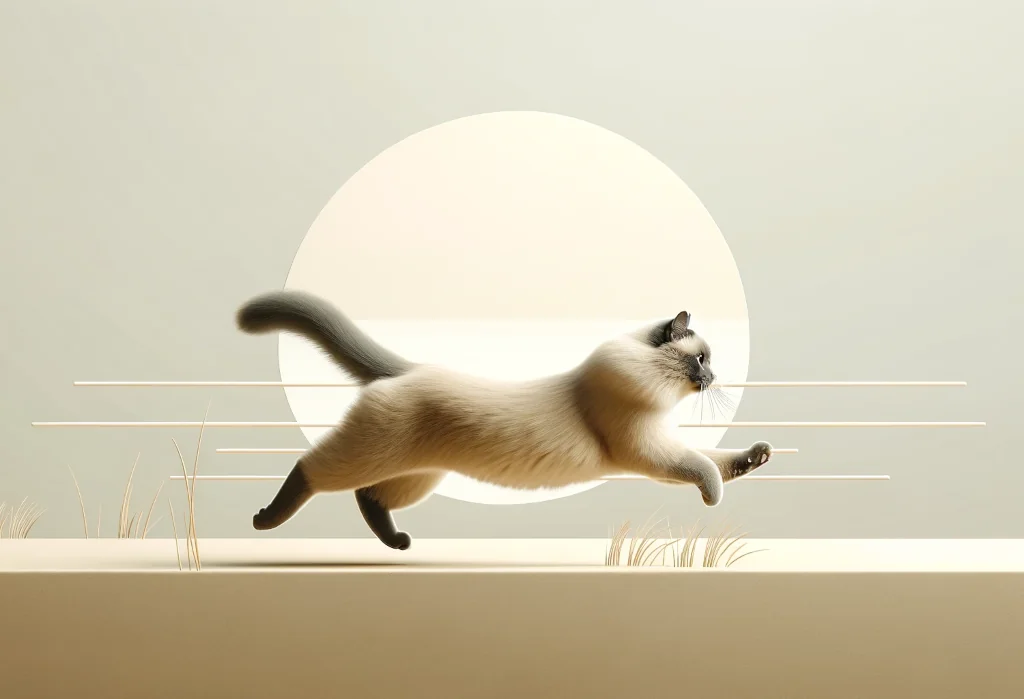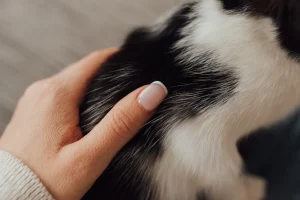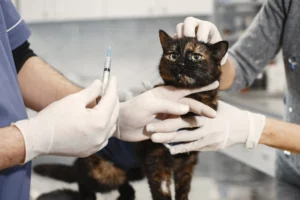Have you ever watched your cat take off like a furry sidewinder missile and thought, “What on earth?” You’re not alone. Many cat owners find themselves both amused and bewildered by this quirky behavior. In this blog post, you’ll get the scoop on why your feline friend might suddenly decide to impersonate a crab.
Understanding your cat’s sideways sprint can turn your confusion into appreciation for their complex and fascinating behaviors. Let’s unravel the mystery together.
Quick Takeaways:
- Sideways running in cats is a playful surge of energy, mimicking natural predatory behaviors and not a cause for concern.
- Triggers include playfulness, surprise, social interaction, and high energy levels, often leading to exhilarating dashes.
- Encourage this behavior with interactive toys, a safe play environment, and routine playtimes to keep your cat mentally and physically stimulated.
Why Do Cats Run Sideways?
Ever noticed your feline friend zipping across the room with their body oddly positioned to the side?
This quirky behavior is a mix of their primal instincts and sheer playfulness. Cats are naturally stealthy creatures who excel in the art of surprise, and running sideways is just another trick in their bag. When they adopt this unusual stance, it’s not just for kicks; it’s a tactic to appear larger and more intimidating to their “prey” — which, in a domestic setting, is likely a favorite toy or, sometimes, your unsuspecting feet.
Another layer to this behavior is the sheer joy and excitement it brings them. Just like humans, cats have unique ways of expressing their happiness and eagerness, and this sideways dash is akin to a child’s skip in a playground. Furthermore, this sideways scampering can serve as a non-verbal signal to other pets or their human companions, indicating their readiness to engage in some playful tussle or chase.
Is Running Sideways Normal for Cats?
Absolutely. If your cat occasionally darts around sideways, it’s a healthy display of their instinctual behavior and playful nature. This form of locomotion is not just common but expected among cats of all ages, breeds, and sizes. It’s their way of staying agile, practicing their hunting skills, and of course, having a blast.
Veterinarians and animal behaviorists both affirm that sideways running is a positive and normal aspect of feline behavior. It indicates your cat is physically active and mentally stimulated, both of which are crucial for their overall well-being. However, it’s important to ensure their playtime is safe and free from potential hazards, like sharp objects or high drops, to prevent any accidents during their enthusiastic dashes.
What Triggers Sideways Running in Cats?
Several factors can trigger your cat to suddenly channel their inner crab and scuttle sideways. Understanding these can help you anticipate or even initiate fun play sessions with your furry pal:
-
Playfulness : Often, a cat will exhibit this behavior simply because they’re in a playful mood. Introducing new toys that mimic the movement of prey, such as a feather wand or a laser pointer, can often lead to a sideways sashay.
-
Surprise or Fear : A sudden noise or movement can startle your cat, causing them to puff up and scoot sideways as a defensive mechanism. In these instances, it’s their way of saying, “I’m big, don’t mess with me!”
-
Social Interaction : When around other cats or even dogs, the sideways run can be a sign of playful intent or a way to test boundaries. This is especially common in multi-pet households where the dynamics are always shifting and engaging.
-
High Energy Release : Sometimes, after a long nap or when they’re feeling exceptionally energetic, cats will burst into random sprints, including the amusing sideways gallop. It’s their way of releasing pent-up energy.
One unique and often overlooked trigger is the “Mirror Effect”. Cats encountering their reflection can sometimes perceive it as another cat. This can lead to a sideways display either out of playfulness or an attempt to intimidate the “other” cat. Providing ample playtime and environmental enrichment can reduce the frequency of such occurrences by ensuring your cat is mentally stimulated and less likely to be fixated on their reflection.
In all these instances, sideways running is a delightful glimpse into the rich emotional and mental landscape of our feline companions. It’s a reminder of their complexity and the joy they find in life’s simplest pleasures. As cat owners, witnessing and understanding such behaviors only deepens our bond with these incredible pets.
How Can You Tell If It’s Playful or Something More?
Cats are masters of disguise and sometimes, deciphering their behavior can feel like cracking a code. But, when your cat starts racing around sideways, you’ve got to wonder—are they just having a ball, or is there more to it? Here’s the scoop on how to tell the difference.
Playful Sideways Running: This is usually accompanied by a whole bunch of other jovial behaviors. Look for a puffed-up tail, ears pointed forwards or in a neutral position, and eyes wide open but not dilated. A playful meow or chirp might escape them as they dart around. If they pause and crouch – front low, butt wiggling in the air – they’re probably inviting you or another pet to join in the fun.
Fear or Aggression: This shows up a bit differently. Their sideways run might be coupled with hissing, spitting, or growling. Their fur, including their tail, could be puffed up to make them appear bigger—a classic defensive position. Their ears might be pinned back against their head, and their pupils dilated.
If your cat seems to be running sideways out of fear or aggression, it’s essential to figure out what’s stressing them out. Cats are sensitive to changes in their environment, so keep an eye out for anything new or unusual that might be triggering them.
What Can You Do to Encourage Healthy Play?
Encouraging healthy play is beneficial for your cat’s physical and mental health, and it fortifies the bond between you two. Here’s how to make playtime productive, safe, and super fun:
Opt for Interactive Toys
Interactive toys are fantastic for encouraging the natural predator in your cat. Think laser pointers, feather wands, or anything that mimics the movement of prey. This kind of play not only stimulates their hunting instinct but also provides great exercise.
Create a ‘Safe’ Space
Designate a play area where your cat feels secure and can let loose without any restrictions. Make sure the space is free of anything fragile or hazardous.
Schedule Regular Playtimes
Cats thrive on routine. By scheduling playtimes, you’re more likely to engage with them when they’re in a playful mood, making the experience enjoyable for both of you.
Try Puzzle Feeders
Puzzle feeders do double duty by stimulating your cat mentally and slowing down their eating pace. This is especially useful for indoor cats who need that extra bit of mental engagement.
Introduce New Toys Gradually
Cats can become bored with the same old toys. Introducing new ones gradually keeps their playtime exciting and engaging. Rotate the toys to keep their interest peaked.
Here’s a unique tip: Create a DIY ‘Sideways Dash’ obstacle course. Use cardboard boxes and tubes to design a course in your living room. Position the obstacles in a way that encourages your cat to dart and weave through them, naturally inviting them to run sideways. You can hide treats in strategic places to motivate them further. Not only is this a fantastic way to enrich their environment, but it also provides them with a whole-body workout, stimulating both their mind and their instincts.
Encouraging healthy play is all about understanding and catering to your cat’s natural behaviors. Observing your cat’s reactions to various toys and games can help you tailor activities that they genuinely enjoy. Remember, each cat is unique, so what works for one might not excite another. By keeping playtime diverse and engaging, you’re sure to enhance your feline’s overall well-being and deepen the special connection you share.
Alex, a passionate animal lover, has experience in training and understanding animal behavior. As a proud pet parent to two dogs and three cats, he founded AnimalReport.net to share insights from animal experts and expand his knowledge of the animal kingdom.










